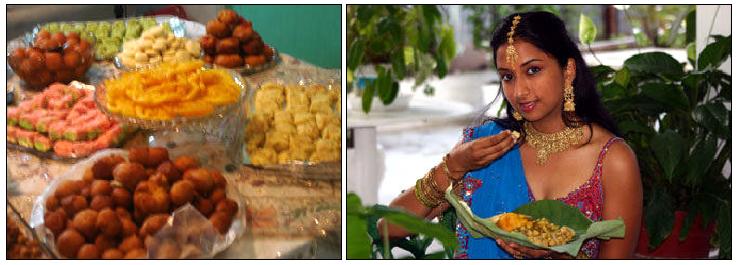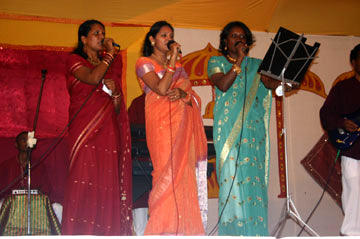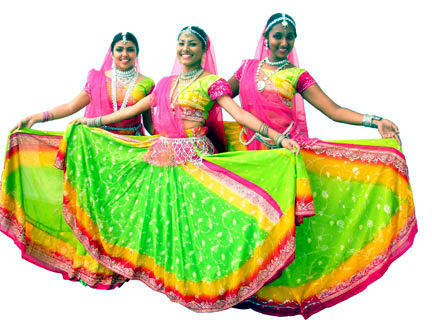![]()
| Pukney,
hot sada roti and ‘nuff’ music Dharmic Sabha sets out to re-create history
THE lure of the golden city and the promise of a better life for their loved ones back home brought the first set of East Indian immigrants to these shores 170 years ago. Sadly, those dreams were to be dashed as when they arrived here, they were greeted by a territory that was somewhat familiar but a system that was anything but glorious.
But
what was their life like back then? And what, prey tell, did they wear
on their backs? What foods did they eat, and indeed, how did they
prepare it? How did they work? How did they spend their spare time? What
did their homes look like? The Guyana Hindu Dharmic Sabha, in a bold move, has attempted to answer those burning questions that may have often plagued us from time to time by recreating that part of our history. Today, for the second day running, Guyanese are being given the chance to step back in time literally and envelop themselves in sobering reflection and celebration of the evolution of local Indian culture. The venue is the Guyana National Stadium at Providence, on the lower East Bank.
“Many of us today are unfamiliar with some of the words that are used to describe implements of work and cooking,” adds her sister, Simantani.
What you will find are ladies serving up hot ‘sada roti’ and ‘choka’ from a fireside that they keep going with a ‘puckney’. You will find on the heads of the women, a ‘rumal’. If you don’t know what they called the utensils, here is your chance to find out, and we bet you will find some of the names amusing.
“This
has never been done before. This is a new venture for us, and we’re
very excited about it,” says Vindhya. Already, there is talk about making the event an annual and a major part of the national tourism calendar.
Sunday, May 04, 2008 |






